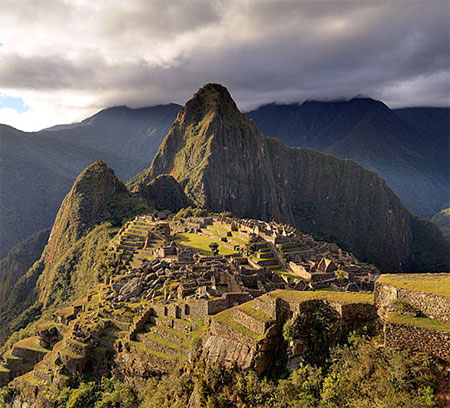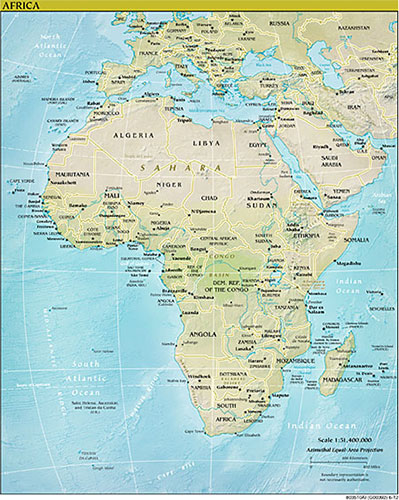In the previous section, you discovered some of the factors of cultural diffusion. This section will focus on barriers to cultural diffusion, namely geographic features that act as barriers. Before going deeper into specific examples, first read about a few geographic features that have an impact on cultural diffusion.
![]() Click on each geographic landform to determine if each makes cultural diffusion easier or more difficult.
Click on each geographic landform to determine if each makes cultural diffusion easier or more difficult.
Read the following two examples of how mountains and deserts can serve as barriers to cultural diffusion.

The Inca Empire, which flourished from 1440-1535 AD, was a sophisticated, organized empire located in the Andes Mountains of present-day Peru. The empire was known, in part, for the architectural feats of mountain roads and terrace farms. The Incas controlled the Andes and used the mountains to isolate themselves from other cultures. The Incas were eventually conquered by the Spanish in battle, but the empire was further wiped out by smallpox brought by their European conquerors.

The Sahara Desert is known as the hottest desert in the world. The Sahara is spread over an area of more than 3,600,000 square miles in North Africa. The desert divides the continent of Africa into two parts - North and Sub-Saharan Africa, creating distinct cultures in both areas. The division between North Africa and Sub-Saharan Africa is not only a physical division, but it also divides the continent in other ways.
Most northern African countries share cultural characteristics with countries in the neighboring Middle East. The most notable characteristic that binds the northern countries is the presence of the Islamic religion in these countries. The desert has protected Sub-Saharan Africa from invasion from countries in the north. The Sub-Saharan region is home to many natural resources, but as a result of European colonization, mining companies have exploited many of these resources and other businesses related to the industry. This left Sub-Saharan Africa with a high rate of poverty.
In your notes, answer the following questions about barriers to cultural diffusion.
Interactive popup. Assistance may be required.
Much like the Silk Road, rivers act as a means for exchanging ideas between cultures.
Interactive popup. Assistance may be required.
While mountains can serve as protection by preventing invasion from other cultures, it can also keep the culture isolated. This isolation can limit trade and opportunities with other cultures.
Interactive popup. Assistance may be required.
Because of the Sahara Desert separation, North African countries engage in trade and the exchange of ideas and other cultural traits with the neighboring Middle East and countries along the Mediterranean Sea. The desert keeps the two regions of Africa from interacting.
Interactive popup. Assistance may be required.
The mountains protected the Incas for a while, which is positive, but it also kept them from interacting with others, which is negative.
Sources for images used in this section, as they appear top to bottom: